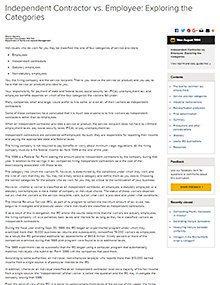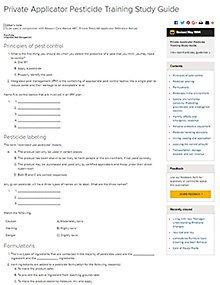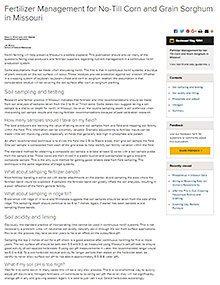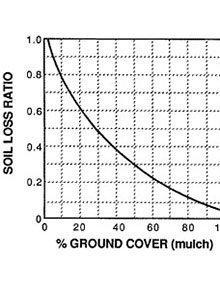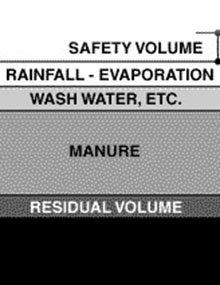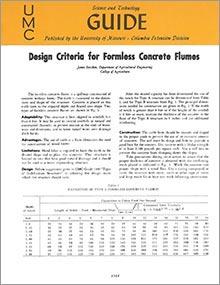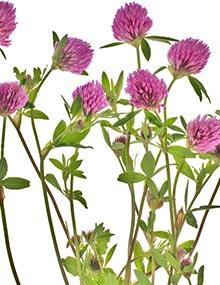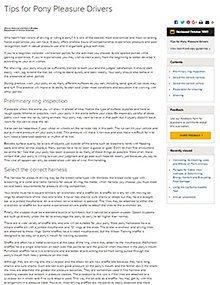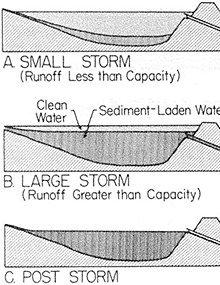Independent Contractor vs. Employee: Exploring the Categories
New
People who work for you can be employees or independent contractors, and you must correctly classify them to avoid IRS problems. Learn how to classify workers in this guide.
Private Applicator Pesticide Training Study Guide
Revised
Editor's note
To be used in conjunction with Missouri Core Manual M87, Private Pesticide Applicator Reference Manual
Fertilizer Management for No-Till Corn and Grain Sorghum in Missouri
Reviewed
No-till farming will help preserve Missouri's erodible cropland. This publication should answer many of the questions facing crop producers and fertilizer suppliers regarding nutrient management in a continuous no-till production system.

Safe Storage and Handling of Grain
Reviewed
Storage and handling of large volumes of grain on Missouri farms is common. Increased storage capacities, larger and faster handling capacities and automation contribute to many potentially hazardous situations during the harvest and storage season. This guide sheet identifies many of them and suggests preventive measures that control or eliminate the hazardous exposure.
Storage Tanks for Liquid Dairy Waste
Reviewed
Displaced Abomasum
Reviewed
The abomasum is the fourth, or "true," stomach in the cow. It normally lies low down in the right front quadrant of the abdomen, just inside the seventh through 11th ribs (Figure 1). Adjacent to the abomasum, on the left side of the abdomen, is the large first stomach, or rumen (Figure 2).
Sorghum Aphid Pest Management
Reviewed

Agricultural Hand Signals
Reviewed
Voice communications are impossible in certain agricultural situations due to distance and noise. For this reason, standard Agricultural Hand Signals have been developed for farm machinery operators by the American Society of Agricultural Engineers. Hand signals can prevent accidents and save time. Use them and teach others to use them.
Pruning Forest Trees
Reviewed
Pruning trees in the yard and in the forest can yield many benefits — if it is done correctly.
In a woodland or plantation, pruning helps maintain a central leader, repairs storm damage, or improves the chances of a clear bole to produce a higher grade of lumber or veneer.
Maintaining Grassed Waterways
Reviewed
Raising Calves on Stored Colostrum
Reviewed
Heating System Maintenance
Reviewed
Design Criteria for Formless Concrete Flumes
Reviewed
Editor’s note
The PDF version of this publication includes illustrations.
Red Clover
Reviewed
Red clover is the most widely grown of all the true clovers. Visit our website today to learn more about red clovers.
Tips for Pony Pleasure Drivers
Reviewed
Who hasn't had visions of driving or riding a pony? It is one of the easiest, most economical and most rewarding horse experiences you can have. A pony offers endless hours of companionship, experience, pleasure and peer recognition, both in casual pleasure use and in organized group activities.
Soybean Variety Selection
Reviewed
No one has yet developed a simple answer to the question of how to choose the best variety of soybean to grow, but it is the intent of this publication to present guidelines for choosing a variety for a given set of conditions.
Establishing Birdsfoot Trefoil in Bluegrass Sod
Reviewed
Birdsfoot trefoil and Kentucky bluegrass will produce three times as much beef as unimproved bluegrass. Even heavily fertilized bluegrass will produce only 65 percent as much animal product as trefoil-bluegrass combination. See Table 1.

